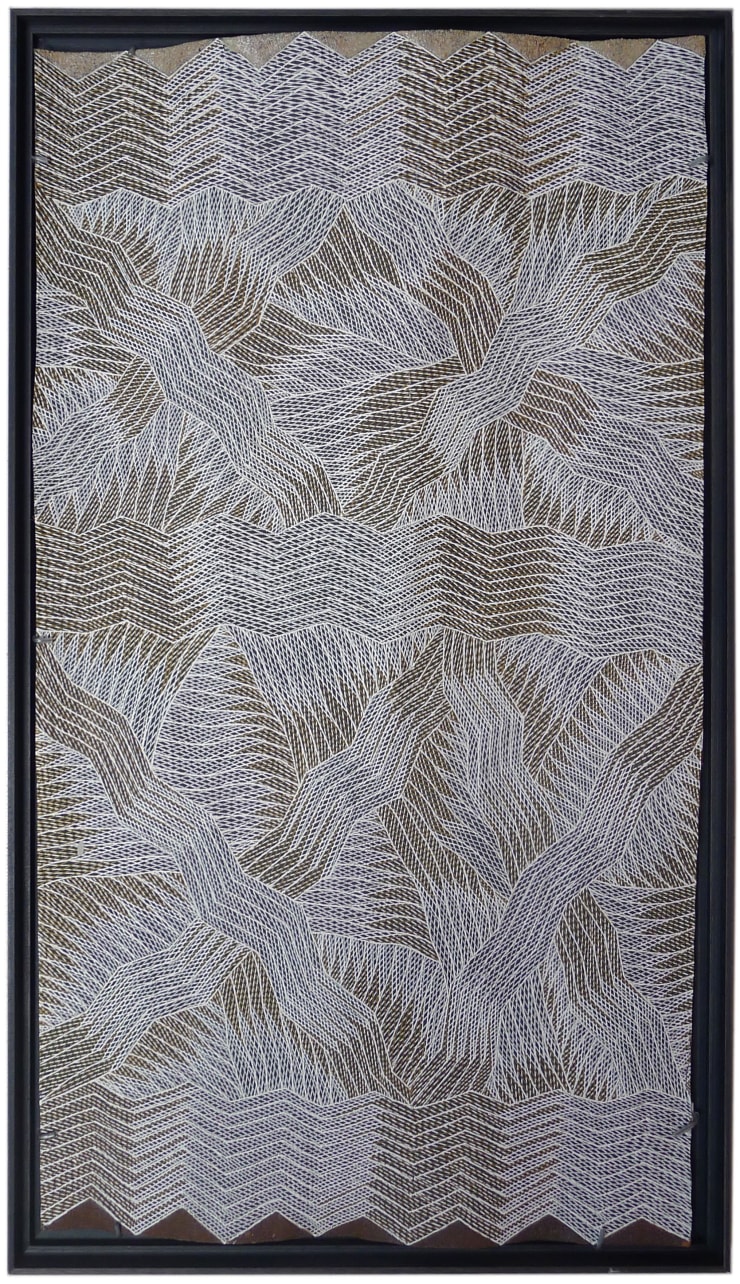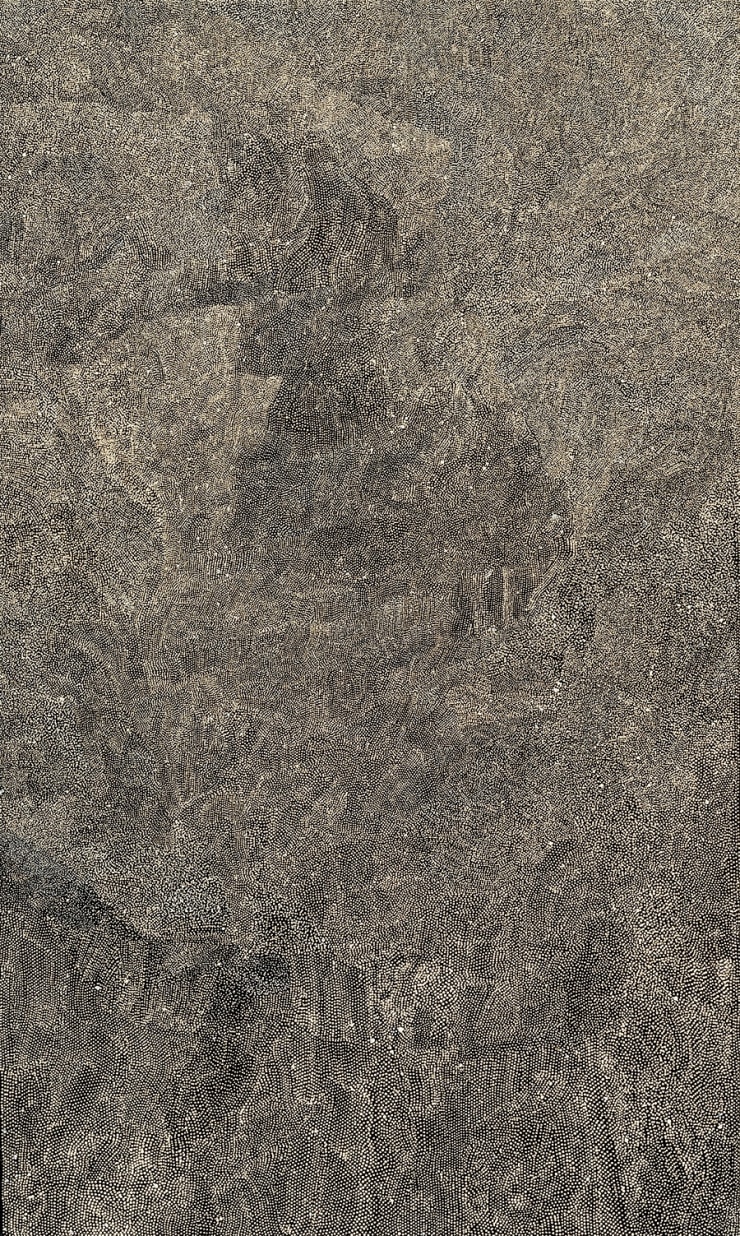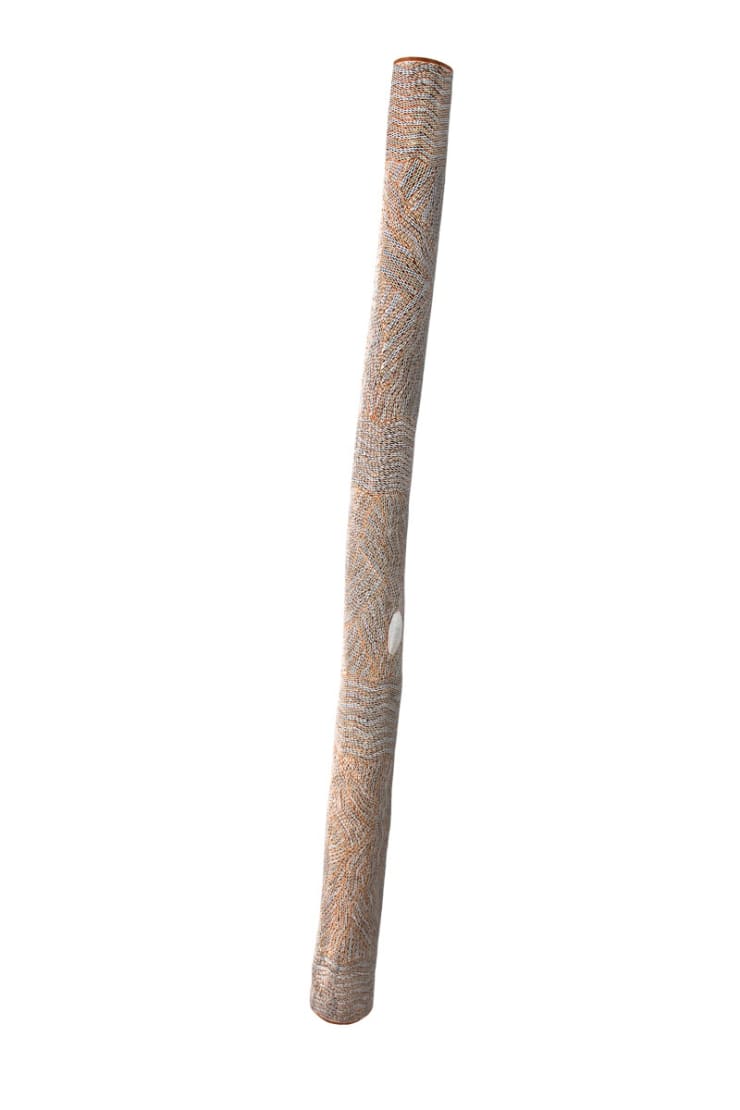Sacred Marks
Patrick Bitting, Samson Bonson, Nola Campbell, Claude Carter, Don Djorlom, Manini Gumana, Abie Loy Kemarre, Angelina Kngale, Genella Kngwarreye, Joy Kngwarreye Jones, Susan Marawarr, Eileen Mbitjana, Elizabeth Mbitjana, Charmaine Pwerle, Gloria Petyarre, Susie Petyarre, Lily Sandover, Nawurapu Wununmurra
Sacred Marks showcases monochromatic works including paintings, carvings and bark paintings from some of the finest Australian indigenous artists working today.
The exhibition brings together a selection of artists from the remote, dry, central lands of Australia to the northern coastal area of Arnhem Land. The Central desert and northern coastal life present very different challenges for indigenous people. Survival in these harsh environments, where landscape, flora and fauna, food sources and ceremony may vary considerably from place to place, does not diminish the connectedness to nature and "country". This subject is the focus for painting and carving across Indigenous Australia. The art derives from the traditional way of life - a society of unbroken Indigenous Australian culture, believed to date back at least 60,000 years. Some of the different kinds of works include:
Works from Utopia, a vast Aboriginal owned cattle situated 250K North East of Alice Springs, in the Northern Territory, which has produced a long line of distinguished artists including Gloria Petyarre, Joy Kngwarreye Jones and Lily Sandover, who never cease to thrill with their sacred, ceremonial marks. Utopian artists use acrylic paints on canvas or Belgian linen. Utopia is where the great Emily Kame Kngwarreye lived and worked but the new star of Utopia is Charmaine Pwerle whose unique, almost expressionist, artistic style has impressed with nuanced and dancing brush strokes.
Susan Marawarr, who makes bark paintings, Larrakitj (hollow logs) and slim Mimih Spirits. Marawarr is a leading young artist from Maningrida. Her dots depicting ceremonial patterns are bold and dynamic. She comes from a long line of distinguished artists and has already toured USA with a major exhibition. Marawarr mixes her own paint from natural rocks, adding an acrylic binder for stability. The preparation process of bark is long and involved. Collected from the Stringy Bark forests of Northern Arnhem Land during the wet season, bark is taken when the trunks are completely sodden. The bark is removed in sections and laid over a roaring fire to flatten, then taken back to the Art Centre where the surface is worked until it is clean and very smooth, ready to be painted. Her Mimih spirits and hollow tree trunks are cut and prepared in a similar way.
Mokuy and Mimih Spirit Carvings and Larrakitj (hollow logs) from Arnhem Land
Maningrida artist Samson Bonson produces thousands of tiny dots on sturdy black mimih spirit carvings. He was taught to carve and paint by senior artist Crusoe Kurdal in the 1990s and has since developed his own unique style. His work is represented in the collection of The British Museum.
Nawurapu Wununmurra, from coastal north west Arnhem land produces stunning Mokuy carvings that are as special as this magnificent man who carves and paints these figures with finesse and a deep understanding of Yolngu culture. From the same area, Malaluba Gumana paints her lily dreaming - a delicate pattern of water lilies and leaves, using a fine brush made from human hair to produce her majestic Larrakitj (hollow logs).
Western Desert - Drawings by Nola Campbell, using ink on arches paper, are stark, graphic symbols of Western Desert culture, while Claude Carter's monochrome painting in natural earth ochre from the Kimberley impress with his depiction of the sacred sites at Goonboorooru, near Fitzroy Crossing WA, where Claude lives and works.
-
 Claude Carter, Limestone Ridge at Gooboorooru Cave, 2011
Claude Carter, Limestone Ridge at Gooboorooru Cave, 2011 -
 Joy Kngwarre Jones, Enteebra, 2015
Joy Kngwarre Jones, Enteebra, 2015 -
 Nola Yurnangurnu Campbell, Yalara, 2014
Nola Yurnangurnu Campbell, Yalara, 2014 -

Gloria Petyarre, Mountain Devil Awelye, Acrylic on linen, 125 x 80 cm, 2007
-
 Manini Gumana, Garrapara
Manini Gumana, Garrapara -

Susie Petyarre, Flowers at Enteebra, Acrylic on linen, 150 x 90 cm, 2015
-

Angelina Kngale, Wild Plum, Acrylic on linen, 90 x 90cm, 2011
-

Eileen Mbitjana, Wild Plum, Acrylic on linen, 150 x 90 cm, 2015
-
 Samson Bonson, Mimih Spirit, 2020
Samson Bonson, Mimih Spirit, 2020 -
 Nawurapu Wununmurra, Makani
Nawurapu Wununmurra, Makani -
 Manini Gumana, Garrapara
Manini Gumana, Garrapara












